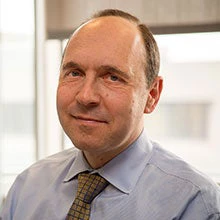This is the second blog in a series on forest livelihoods in Africa.
When driving through Sangha and Likouala in the northern part of the Republic of Congo, you cannot help but marvel at the vastness of the tropical forest. The area, nearly the size of Greece, is part of the Congo Basin, one of the most important wilderness areas left on earth.
Yet, the improved roads you travel on, a vital economic link for the 306,000 inhabitants of these two departments, are a harbinger of a new trend that the area had long been relatively sheltered from: deforestation and forest degradation. Although low by international standards, the deforestation and degradation rates in this area have been rising rapidly in recent years.
While industrial agriculture, roads built as part of forestry operations, and mining all contribute to deforestation and forest degradation, the factor most closely intertwined with poverty is a growing population that has few alternatives to slash-and-burn agriculture to ensure its livelihood.
The Republic of Congo has a low historical rate of deforestation – but this is projected to accelerate as the country attempts to develop this remote forest area, and as the population grows by some 3% per year. Despite being the country's second-largest foreign exchange earner after oil, the share of the forests to the national economy remains relatively low. These forests also store substantial amounts of carbon that can also serve as a resource that brings financial benefits for development. When forests are cut, burned and converted to other uses, the stored carbon is released as greenhouse gases that contribute to climate change.
The country has a legitimate need to develop in an effort to reduce the deep poverty of most of the 575,000 people dependent on forests for their livelihoods, in particular in its remote areas, while making use of its sizeable forest resources. The challenge, then, is how to identify pathways that marry development and forest preservation, which contributes to environmental quality, rural livelihoods, and climate change mitigation.
In 2008, the Republic of Congo committed to Reducing Emissions from Deforestation and Degradation (REDD+) program as a way to green its development path. REDD+ is a global program under the United Nations Framework Convention on Climate Change created to provide financial incentives for developing countries to fight deforestation and forest degradation, and enhance conservation, sustainable forest management, and forest carbon stocks.
Payments under REDD+ can assist Congo in the transition to a sustainable economy less dominated by oil without compromising the conservation of natural resources. The country’s REDD+ initiative is helping to position its forests as providers of global ecosystems services, especially biodiversity and greenhouse gas emission reductions.
These efforts are illustrated in the documentary REDD+ Republic of Congo: Engaging People in Sustainable Forest Management and Bringing Community Benefits produced as part of a series by the Africa Environment and Natural Resources team at the World Bank. The videos give a human face to deforestation and share the transformation happening on the ground through an ambitious, cross-sectoral REDD+ program. This video tells the story of individuals and communities in Sangha and Likouala and their challenges, successes, and hopes for the future.
A large portion of the government’s REDD+ approach builds on simple, participatory management plans for communities. It provides support to farmers to adopt sustainable agroforestry systems in degraded forest areas. It also gives them access to inputs, know-how, finance, and market linkages to produce a mix of subsistence and cash crops on a smaller land area than their current slash-and-burn systems require. While there is a particular focus on developing a sustainable cocoa sector, farmers are able to choose from a menu of crops including improved cassava, bananas, fruit trees, and oil palm. In combination with payments for ecosystem services both at the individual and community level, this approach is expected to boost and diversify household incomes, improve food security, and simultaneously reduce deforestation rates.
The government is strategically aligning funds from the Forest Investment Program, the Global Environment Facility, International Development Association, French Development Agency and the United Nations Development Programme to help the Republic of Congo address the drivers of deforestation.
The documentary featured is part of a series on forest livelihoods in selected countries with dynamic forest and REDD+ activities including Burkina Faso, Democratic Republic of Congo, Ghana, Liberia, and Mozambique.
RELATED
- FEATURE STORY: “Forest-Smart” Strategies Deliver Benefits for People and the Environment
- BLOG: Mozambique: Communities give hope for resilient and sustainable forests
- BLOG: A Balancing Act: Exploring How the Republic of Congo Can Use Forest Resources Sustainably for Development
- BLOG: Telling Real People’s Stories About Forests and Livelihoods in Africa
- BLOG: Next Phase of Forest Action
- BRIEF: World Bank Group Steps Up Forest Action in Support of Development and Climate Goals
- BRIEF: Why Forests are Key to Climate, Water, Health, and Livelihoods
- BRIEF: Enhance Livelihoods of Forest Communities
- INFOGRAPHIC: Forests Provide Vital Resources to 1.3B people
- PROFOR Program


Join the Conversation